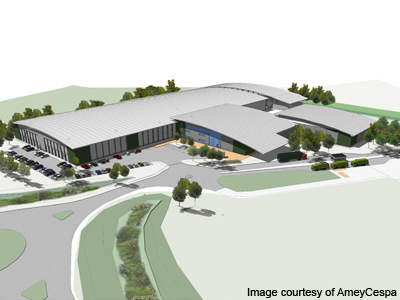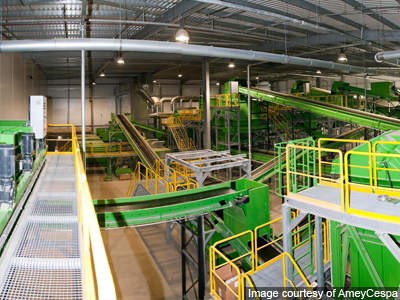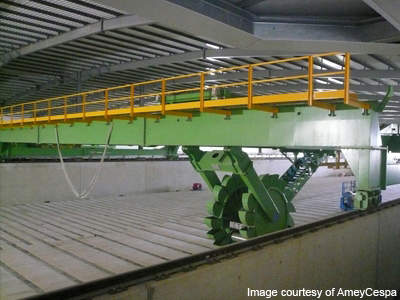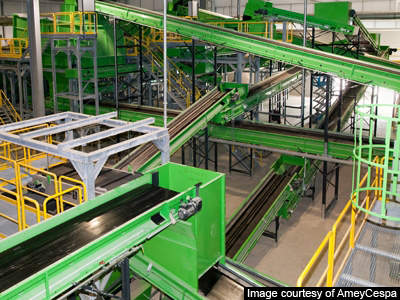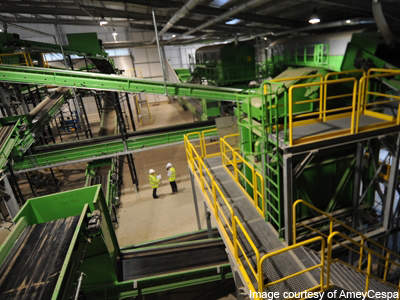AmeyCespa, a Spanish government-owned waste management company, has made a foray into the UK’s waste processing sector by acquiring the Cambridgeshire-based waste management company Donarbon in September 2010.
The £48.6m deal covered acquisition of all Donarbon facilities including the newly opened Mechanical Biological Treatment (MBT) facility, two transfer stations, nine household waste recycling centres and 4.5m cubic metres of landfill area.
Donarbon was the UK’s first small-to-medium sized company to win a £730m waste treatment contract from Cambridgeshire County Council. The 28-year long private finance initiative (PFI) contract was signed in April 2008 and included the construction of a new MBT facility.
At an estimated cost of £42m, the MBT plant was commissioned in November 2009 at Donarbon’s waste management park located at Waterbeach, north of Cambridge. The plant is built on a 500 acre site which was originally purchased by Dickerson Group, the parent company of Donarbon.
The MBT plant processes 179,000t/y of residual waste collected from the kerbside. The waste is turned into PAS 100-accredited compost, which is sold for quarry filling or as fuel for energy generation.
The plant consists of three main chambers built around a steel framed structure with a curved roof. It also has a large water tank, an air treatment plant and an education centre.
The plant was built with the objective of helping Cambridgeshire Council meet its future recycling and landfill diversion targets. It will also account for the waste created by the growing population over the contract period. Cambridgeshire is expected to witness a population increase of over 100,000 during the contract period.
Equipment installed
The MBT plant has 62 conveyor belts. It includes two trammels, a hard particle separator, a star screen, overhead magnets, an eddy current separator, and a BRINI separator.
Other equipment installed is the Crambo machine and a 35mt wide compost turning machine.
The MBT process
The residual waste reaches the facility in black polythene bags in the first chamber where it is loaded onto to the bag splitters for emptying. It is then sent to the second chamber where the conveyors and two trammel screens are placed.
Giant circular sieves or the trammel screens sort waste into recyclable and non-recyclable material and blow them on to the respective conveyors. The glass and stone particles are separated by the hard particle separators using vibrating plates. Ferrous items such as steel cans are pulled out by large electro-magnets while the eddy current separators sort out non-ferrous metals for recycling. The waste is further sorted into heavy and light fractions by ballistic separators. Plastic is separated using infra-red technology.
During the process around 20%-25% of recycling waste is recovered. Remaining waste such as paper, cardboard and garden waste is carried to the Crambo machines which grind and add measured amounts of water to make organic waste. This waste is then sent for further composting.
The composting hall or the third chamber is 70m-wide and 200m-long. The organic waste is spread across the hall up to a height of 3m. The compost turning machine has mechanical wheels that run over the tracks along the length of the hall. It runs continuously to keep the aerator at consistent and controlled temperatures, allowing the waste to biodegrade.
Air is sucked from the material through buried channels. After seven weeks the compost material is extracted by the conveyors, screened and stored for use.
The leachate formed in the process is sent back to the Crambo machine for recycling. The sucked air is cleansed by passing it through a bio-filter, acid scrubbers and wet-wood chips before releasing into the atmosphere.
Contractors
The prime contractor involved in the construction of the MBT facility was the Dutch-based civil engineering firm BAM Nuttall.
The conveyors and composting turning machine were delivered by Komptech and Kelagh respectively.

